Bishop's Hat Epimedium grandiflorum 'Queen Esta'

ABOUT
Queen Esta is a striking perennial known for its beautiful and delicate appearance. This plant boasts heart-shaped leaves that emerge bronze in spring, transitioning to green as they mature, and possibly turning reddish-bronze in the fall. In springtime, the plant is adorned with unique, airy flowers that dangle above the foliage on wiry stems. These blossoms are enchanting, with a distinctive shape often resembling small fairy wings or a bishop's mitre, and come in colors ranging from purples and lavenders to whites or pinks. The blooms' intricate, spurred petals add an exotic flair to the garden, making it a sought-after specimen for shaded areas. The foliage remains attractive throughout the growing season, providing a lush underlayer to the garden composition. It offers a splendid ground cover and a delightful visual interest with its changing leaf colors through the seasons. This plant is cherished not only for its ornamental foliage and flowers but also for its resistance to pests and diseases, proving to be a resilient addition to the shade garden.
About this plant
 Names
NamesFamily
Berberidaceae.
Synonyms
Barrenwort, Bishop's Hat, Fairy Wings, Horny Goat Weed.
Common names
Epimedium grandiflorum 'Queen Esta'.
 Toxicity
ToxicityTo humans
Epimedium grandiflorum, commonly known as fairy wings, is not typically regarded as a toxic plant to humans. Most species and varieties of Epimedium, including 'Queen Esta', are considered safe and are even used in traditional herbal medicine. However, consuming any plant in large quantities could potentially cause stomach upset or allergic reactions in some individuals. It is always best to exercise caution and avoid ingesting plants not verified as safe for consumption.
To pets
Fairy wings is not commonly listed as a toxic plant for pets, including cats and dogs. The Epimedium grandiflorum 'Queen Esta' variety should not pose a significant risk of toxicity if ingested by pets. As with any non-food plant, ingestion might occasionally cause mild gastrointestinal upset such as vomiting or diarrhea. If a pet consumes a significant amount of the plant and shows adverse symptoms, it would be prudent to consult a veterinarian.
 Characteristics
CharacteristicsLife cycle
Perennials
Foliage type
Deciduous
Color of leaves
Varies
Flower color
Varies
Height
1-2 feet (30-60 cm)
Spread
1-2 feet (30-60 cm)
Plant type
Herb
Hardiness zones
5
Native area
Japan
Benefits
 General Benefits
General Benefits- Attractive Flowers: produces beautiful, large flowers that enhance the visual appeal of gardens.
- Ground Cover: forms a dense mat that suppresses weeds and covers bare spots in landscaping.
- Drought Tolerance: once established, has a good resistance to short periods of drought.
- Shade Tolerance: able to thrive in partially shaded environments where other plants might struggle.
- Low Maintenance: requires minimal care once established, making it ideal for gardeners seeking low-fuss plants.
- Deer Resistance: less palatable to deer than other garden plants, reducing the risk of damage.
- Long Blooming Period: often has a extended period of bloom, bringing long-lasting color to gardens.
- Winter Interest: some varieties retain their foliage in winter, providing year-round interest in the landscape.
 Medical Properties
Medical Properties- Libido Enhancement: Traditionally used in Chinese medicine to improve libido and sexual function.
- Osteoporosis Treatment: Contains icariin, which is thought to have potential benefits for bone health and may help in the treatment of osteoporosis.
- Anti-inflammatory Effects: May have anti-inflammatory properties that can help with conditions such as arthritis.
- Antioxidant Activity: The plant possesses antioxidant compounds, which can help in protecting the body against free radical damage.
 Air-purifying Qualities
Air-purifying QualitiesThis plant is not specifically known for air purifying qualities.
 Other Uses
Other Uses- Ground cover: Epimedium grandiflorum 'Queen Esta', also known as Bishop's Hat, can provide dense ground cover in shady areas of the garden, creating an attractive foliage display.
- Shade garden accent: Its distinctive leaves and flowers can add visual interest to gardens that receive little sunlight.
- Erosion control: Bishop's Hat can help stabilize soil on slopes or banks with its spreading habit, reducing soil erosion in those areas.
- Natural mulch: When the leaves of Bishop's Hat fall, they decompose to enrich the soil, functioning as a natural mulch.
- Butterfly attraction: While not commonly known, the flowers may attract butterflies, adding an ecological benefit to your garden.
- Border planting: The plant's mounding form and attractive foliage make it suitable for use as a border along walkways or garden edges.
- Winter interest: Some varieties of Bishop's Hat have leaves that turn red or bronze in the fall and persist into winter, providing seasonal interest.
- Container gardening: Bishop's Hat can be grown in containers where ground space is limited, especially in shaded patios or balconies.
- Fairy garden component: The small stature and delicate flowers of Bishop's Hat make it an ideal plant for fairy and miniature gardens.
- Living pathway edges: Its low height and slow spread can nicely define the edges of garden paths without overgrowing the area.
Interesting Facts
 Feng Shui
Feng ShuiThe Epimedium, commonly known as "Barrenwort," can be used in Feng Shui as a symbol of fertility and love, often placed in the relationship corner of the garden, which is the farthest right corner from where you enter.
 Zodiac Sign Compitability
Zodiac Sign CompitabilityThe Barrenwort is not used in astrology practice.
 Plant Symbolism
Plant Symbolism- Lust and Love: Commonly known as 'Horny Goat Weed,' Epimedium grandiflorum 'Queen Esta' is often associated with aphrodisiac properties, symbolizing both lust and the pursuit of love.
- Youthfulness: Due to its use in traditional medicine for anti-aging and rejuvenating effects, this plant is also symbolic of youthfulness and vitality.
- Fertility: With its reputation for enhancing reproductive functions, the plant symbolizes fertility and fecundity.
- Protection: In some cultures, Epimedium is used in herbal concoctions meant to protect against harmful elements, thus symbolizing safeguarding and wards.
 Water
WaterFor the Bishop's Hat or Barrenwort (Epimedium grandiflorum 'Queen Esta'), it's important to maintain constant moisture, but you should avoid overwatering. Water the plant deeply once a week, ensuring that the soil is moist to about an inch deep. During the growing season in spring and summer, you may need to increase watering frequency to twice a week, especially if the weather is particularly dry or hot. Each watering session should involve slowly adding water until you see it start to escape from the bottom of the pot, indicating the soil is fully saturated. In total, this might mean using about one to two gallons of water per week, depending on the size of the plant and the environmental conditions.
 Light
LightBishop's Hat prefers light conditions that offer partial shade to full shade. The ideal spot would be under a tree canopy or on the north side of a building where it receives indirect, filtered sunlight. Direct sun can scorch the delicate foliage, so it’s best to avoid placing the plant in areas where it would be exposed to harsh afternoon sun.
 Temperature
TemperatureBishop's Hat thrives in temperatures that are common in temperate climates. It can tolerate a temperature range from about 50 to 80 degrees Fahrenheit. It's important to protect the plant from extreme cold, so ensure it's not exposed to temperatures below 50 degrees Fahrenheit for extended periods. The ideal temperature range is between 60 and 75 degrees Fahrenheit for optimal growth.
 Pruning
PruningPrune Bishop's Hat to remove any damaged or dead foliage and to maintain the desired shape and size. The best time for pruning is in the late winter or early spring before new growth begins. Pruning at this time helps to encourage healthy new foliage and blooms. It is typically sufficient to prune once annually, as this plant does not require intensive shaping.
 Cleaning
CleaningAs needed
 Soil
SoilBishop's Hat thrives in moist, well-draining soil rich in organic matter with a pH range from 5.5 to 7.5. A mix of leaf mold, compost, and loamy garden soil often provides an ideal environment for this perennial.
 Repotting
RepottingBishop's Hat typically does not need frequent repotting as it prefers to be undisturbed. Repot every 3-4 years or when the plant outgrows its container, ensuring minimal root disturbance.
 Humidity & Misting
Humidity & MistingBishop's Hat prefers moderate to high humidity levels but is fairly adaptable and can tolerate lower humidity common in most home environments.
 Suitable locations
Suitable locationsIndoor
Grow Bishop's Hat in bright, indirect light with moderate humidity.
Outdoor
Plant Bishop's Hat in shade to partial sun, in moist soil.
Hardiness zone
5-9 USDA
 Life cycle
Life cycleEpimedium grandiflorum 'Queen Esta', also known as large-flowered barrenwort, begins its life cycle as a seed, which germinates in spring under adequate moisture conditions. Seedlings develop into a rosette of heart-shaped leaves, and establish a strong root system. As the plant matures, usually by the second or third year, it begins to produce flowering stalks in early spring, with blossoms that can be various shades depending on the cultivar. After pollination, typically by bees or other insects, the flowers develop into capsules containing seeds. In the summer, the foliage often goes dormant, especially in hotter climates, to conserve energy. The plant then enters a period of winter dormancy, only to re-emerge and repeat the cycle in the following spring, progressively expanding its reach through rhizomatous growth.
 Propogation
PropogationPropogation time
Spring to early summer
The most popular method of propagating Epimedium grandiflorum 'Queen Esta', commonly known as Bishop's hat, is through division. Typically, the best time to divide these plants is in the spring or autumn when the weather is cool, allowing the divisions to establish roots without the stress of excessive heat. To propagate by division, gently lift the entire plant out of the soil, taking care not to damage the roots more than necessary. Using a sharp knife or spade, carefully separate the plant into two or more sections, ensuring each has a portion of the root system and several growth points or leaves. These divisions can then be immediately replanted into prepared soil, spaced at least 12 inches (approximately 30 cm) apart to give them ample room to grow. Water the new divisions well to help establish them, and maintain consistent moisture while they take root in their new locations.

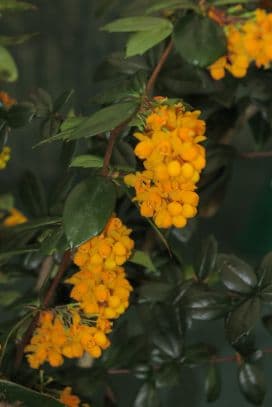
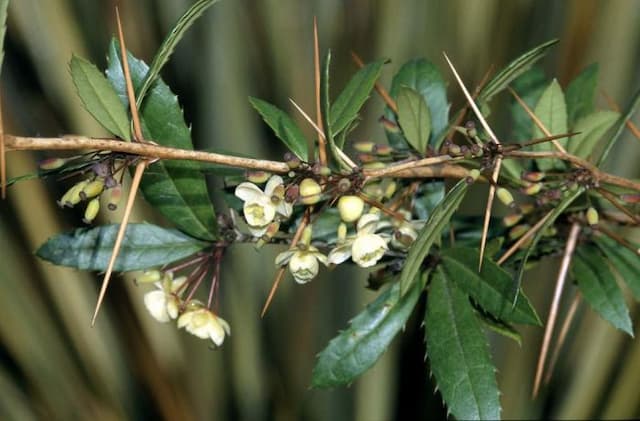
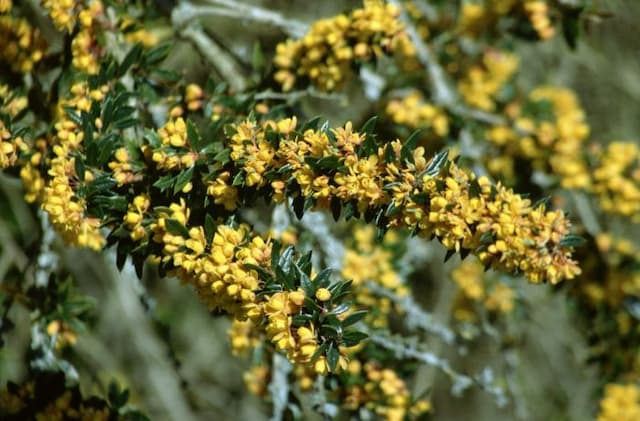
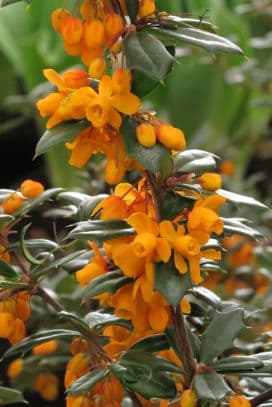
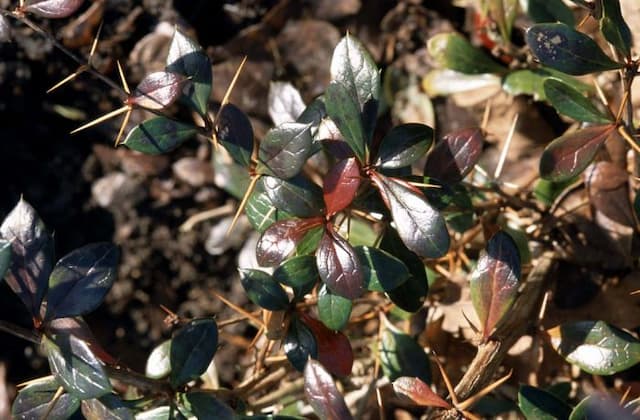


![Japanese barberry [Bonanza Gold]](/_next/image?url=https%3A%2F%2Fplants-admin.emdemapps.com%2Fimages%2Fplants%2F%2Fimages%2F604b5385e413f.png&w=640&q=75)
